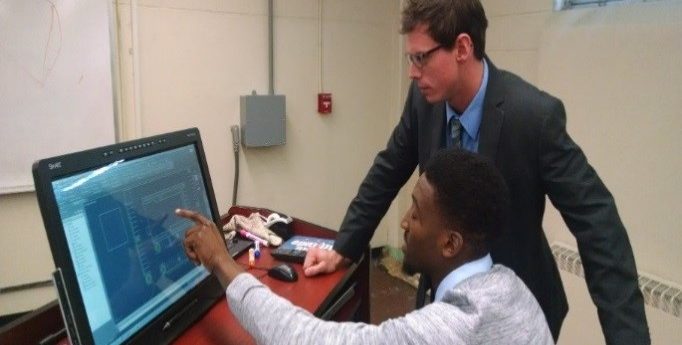By asking communities what they need, Thriving Earth Exchange and EPA’s College/Underserved Community Partnership Program (CUPP) have delivered expertise and lasting impact
It started, like so many things, with a chance encounter at a conference.
Mike Burns, an engineer working at the U.S. EPA, had launched a program to bring technical assistance to underserved communities through partnerships with local colleges and universities. Raj Pandya, a scientist and educator at AGU, had launched a program to help communities advance their priorities through partnerships with scientists. When the two happened to sit next to each other at dinner, they quickly discovered that Burns’ program, College/Underserved Community Partnership Program (CUPP) and Pandya’s program, Thriving Earth Exchange, were a match that was meant to be.
Thriving Earth Exchange and CUPP have since joined forces to advance their shared goals in many ways. Bringing together communities, professional scientists, and university students and faculty has proved a winning combination for a plethora of completed and ongoing collaborative projects.
Help where it’s needed
“Philosophically, we are on the exact same page,” says Burns, who also serves as a member of the Thriving Earth Exchange Advisory Board. “The cornerstone of CUPP is the idea that we only work on things that communities identify they need help on. We don’t tell them what we’re going to give them—we ask them what they need help with. That’s very consistent with the Thriving Earth Exchange approach, and why it’s such a great synergistic collaboration.”
The two organizations first collaborated on an effort to help the small town of Midway, Georgia design a new green municipal building. CUPP connected town officials with a group of engineering students, and Thriving Earth Exchange brought sustainable design expertise into the mix. The outcome was a cost-effective, practical design for which the city was able to win a construction grant and turn the plan into reality.
More recently, CUPP and Thriving Earth wrapped up a project to design a makerspace for San Juan College, a majority minority institution in Farmington, N.M. Crucial to the success of that project has been the remarkable collaboration between students and faculty from two institutions located 2,000 miles apart—San Juan College and Drexel University in Philadelphia, Pa.
‘Like peanut butter and jelly’
One reason CUPP and Thriving Earth work so well together is that they share a common vision while bringing different things to the table. CUPP has spent years ferreting out the needs of communities seeking technical assistance and has established partnerships with more than 70 colleges and universities. In addition to its own work reaching out to communities and universities, Thriving Earth Exchange, as a program of AGU, is uniquely well positioned to tap scientific experts in a wide range of fields.
“We’ve got all these communities we’re trying to help, and Thriving Earth has this great swath of technical experts who want to help,” says Burns. “It’s like peanut butter and jelly.”
Other projects the two organizations have collaborated on include the design of a green roof for a community organization focused on underserved youth in Flint, Mich., an assessment of flooding and hydrodynamics to improve stormwater management in Natchitoches, La., and an effort to assess landslide risk for communities across Puerto Rico.
A vision for growth
As Thriving Earth Exchange ramps up its work in the U.S. and globally, Burns says he aims to guide CUPP through a similar period of growth, expanding CUPP’s successful model to involve more colleges and universities, more communities, and more federal agencies. There are over 16,000 communities across the country with populations of fewer than 10,000 people, and more than 7,000 colleges and universities, Burns notes, and CUPP has only just begun to show what can be accomplished when communities and these institutions work together.
Reflecting on his experience on the Thriving Earth Advisory Board, Burns says he feels inspired by fellow Board members’ dedication, and excited about the possibilities for both organizations—individually and as partners.
“These are extraordinarily learned people, and they are all there with one desire: How do we expand our ability to help people? Both CUPP and Thriving Earth have been very successful in what we’re doing, but neither of us have even come close to reaching the full extent of the good work that we could do,” says Burns.

